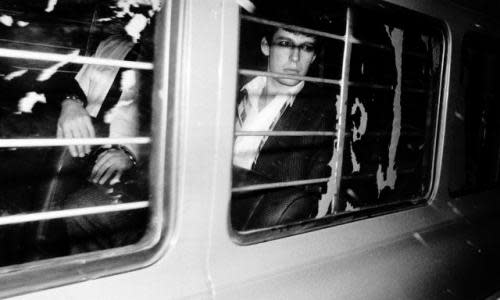Jeremy Bamber lawyers challenge CPS over withheld evidence

Lawyers representing Jeremy Bamber, who is serving a whole life sentence for killing his adoptive parents, sister and her six-year-old twin boys in 1985, have launched a high court challenge to the Crown Prosecution Service for its failure to disclose evidence they say would undermine the safety of his conviction.
The statement of facts and grounds, lodged at the high court on Friday, maintains that the CPS has refused to follow directions made by the court of appeal in 2002 to disclose the sought-after material. It also accuses the CPS of rejecting a report by an eminent ballistics expert appointed by Bamber, without instructing its own expert to challenge the claims.
During the night of 6-7 August 1985, Nevill and June Bamber were shot and killed inside their Essex farmhouse, along with their adoptive daughter, Sheila Caffell, and Sheila’s six-year-old twin sons, Daniel and Nicholas Caffell. Bamber, then 24, had phoned the police to say Nevill had phoned him, saying his sister, Sheila, had “gone crazy and has the gun”.
Initially, police believed that Sheila, diagnosed with schizophrenia, had fired the shots then turned the gun on herself. But, on 10 August, after the police ended their examination of the crime scene, a relative of Nevill and June Bamber, David Boutflour, found a silencer in the gun cupboard of the farmhouse. It was later said to contain blood belonging to Sheila Caffell.
On 7 September 1985, Jeremy Bamber’s ex-girlfriend told police Bamber had discussed killing his family with her and that he was involved. On 29 September 1985, Bamber was charged with the murders.

The silencer featured heavily at the trial at Chelmsford crown court the following year with the prosecution contending it was attached to the rifle during the killings. If true, that would have made the rifle too long for Caffell to have shot herself. The trial judge, in his summing up, told the jury: “On the evidence of the silencer alone you may find Mr Bamber guilty.”
After the jury were sent out to reach a verdict, they returned and asked the judge for clarification on the silencer and blood evidence. The judge said it contained only the blood of Sheila Caffell. Seventeen minutes later, they returned and convicted Bamber by a 10 to two majority.
But a week before the trial, the head of biology at Huntingdon Forensic Science Laboratories wrote to Essex police in a letter seen by the Guardian last year, saying the blood on the silencer “could have come from Sheila Caffell or Robert Boutflour”, another relative. That letter was not disclosed to the defence.
Last year, the Guardian reported on a letter sent to Bamber’s lawyers from the then head of special crime at the CPS on this issue. It stated that while he did not believe there was evidence of a second silencer, if any emerged it “would significantly undermine the case against JB [Jeremy Bamber] and any material supporting such a possibility would plainly be material which casts doubt on the safety of the conviction.”
Earlier this year, a peer-reviewed report compiled by the forensics expert Phillip Boyce was sent to the CPS suggesting there had been more than one silencer. Boyce, who has advised governments and the United Nations on ballistics, concluded that, based on differing groove patterns, sizes and exhibit numbers, “at least two sound moderators had been examined in this case”. Boyce believes both silencers contain blood that could belong to either Caffell or Robert Boutflour. The CPS has dismissed his findings, without employing its own expert to study his report, as is the protocol.
Last year, the then director of public prosecutions, Alison Saunders, published a revised version of CPS disclosure manual. Saunders concluded: “To maintain public confidence in the criminal justice system, it is essential that the relevant disclosure regime is complied with in every case and all duties performed to a high standard. I hope this manual will continue to offer practical guidance to practitioners and give the lay reader a degree of reassurance that the prosecution team is fully committed to meeting its obligations in this hugely important area.”
Speaking from Wakefield prison, Bamber said his requests for disclosure had been ignored for almost 35 years, despite court orders issued in 2002 during his only full appeal that directed complete disclosure to be made.
“We are now in a position to show exactly what has been withheld, which amounts to thousands of key files and documents pertaining to, not just the forensic examination of two silencers, but also to my innocence. This repeated non–disclosure means that the truth remains unknown, as the evidence that gives my case clarity still remains hidden,” he said.
Solicitor advocate Mark Newby from QualitySolicitors Jordans, which represents Bamber, said: “It is disappointing that the CPS has not agreed to provide material that is needed by an independent expert to support the overwhelming inference that a second silencer was examined during the police and forensic science service investigations. We hope that this can quickly be resolved so that the expert can get on with his job and the case can be put back before the court of appeal in order to correct this very grave miscarriage of justice.”

 Yahoo News
Yahoo News 
